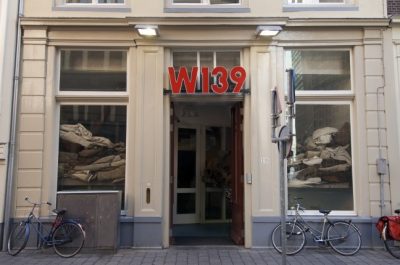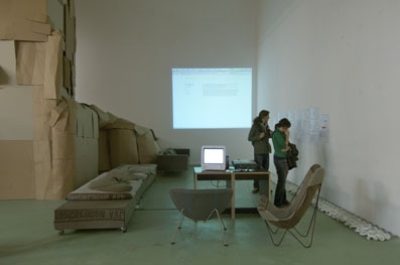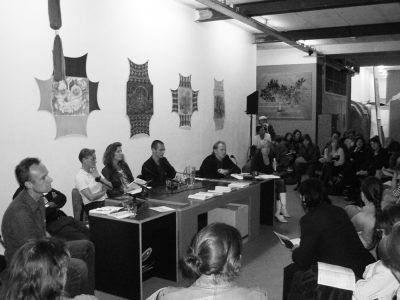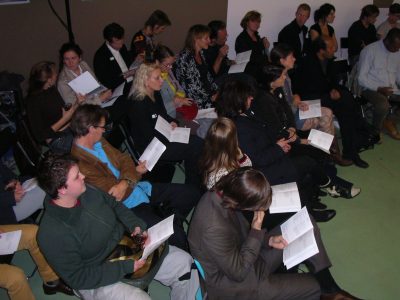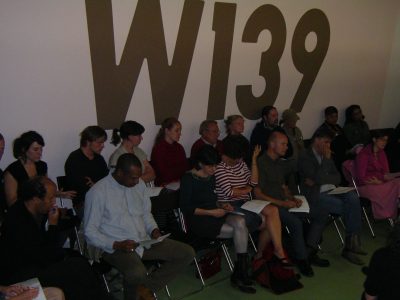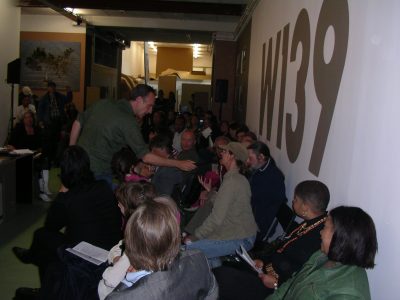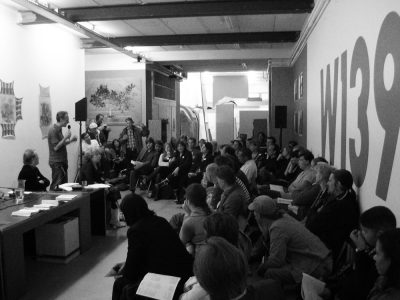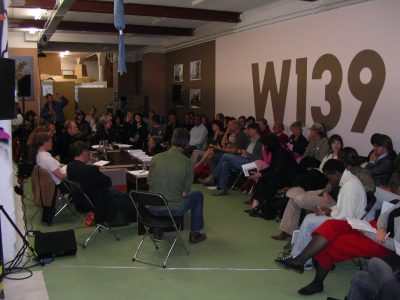Each time a section of the project is completed, the archive is exhibited in an art institution in a city of that country, together with the series of Baby Dolls that were created where each doll represents one participant and her biography. After the exhibition closes, the Baby Dolls are abandoned in public places (see THE PUBLIC SPACE).
While the exhibition is on, an Expert Meeting takes place at which representatives from the spheres of culture, subcultures, politics, and scholarship debate the themes of the project and engage with the question of how effective art interventions in social issues are or can be, by including the specific conditions prevailing in that particular country.
All the panel discussions are documented, compared, and excerpts made available in the CONTEXT section of this website.
Exhibition Amsterdam
Liefde in de Stad / Love is like Oxygen
September – October 2007
W139, Paradiso und SKOR (Foundation for art in Public Space)
Expert Meeting Amsterdam
21 September 2007 , W139, Amsterdam, NL
Participants Expert Meeting
Gijs Frieling, artist, director W139, Amsterdam, NL (Moderation)
Jeroen Boomgaard, art historian, Lectorship art and public space, Gerrit Rietveld Academie and University of Amsterdam, NL
Marieke van Doorninck, historian, politician, municipal council, Amsterdam, NL
Carolien Gehrles, politician, Amsterdam, NL
Erik Hagoort, art theoretician, NL
Doede Hardeman, art historian and curator, Gemeentemuseum The Hague, NL
Ruud Kaulingfreks, philosopher, NL
Greet Kuipers, psychiatrist, NL
Willemijn Los, head of MDHG Interest group drug (ab)users, Amsterdam, NL
Jonas Staal, artist, Rotterdam, NL
Michael Tedja, artist, Amsterdam, NL
Judith Vega, philospher, gender studies, sociology, Rijksuniversiteit, Groningen, NL
